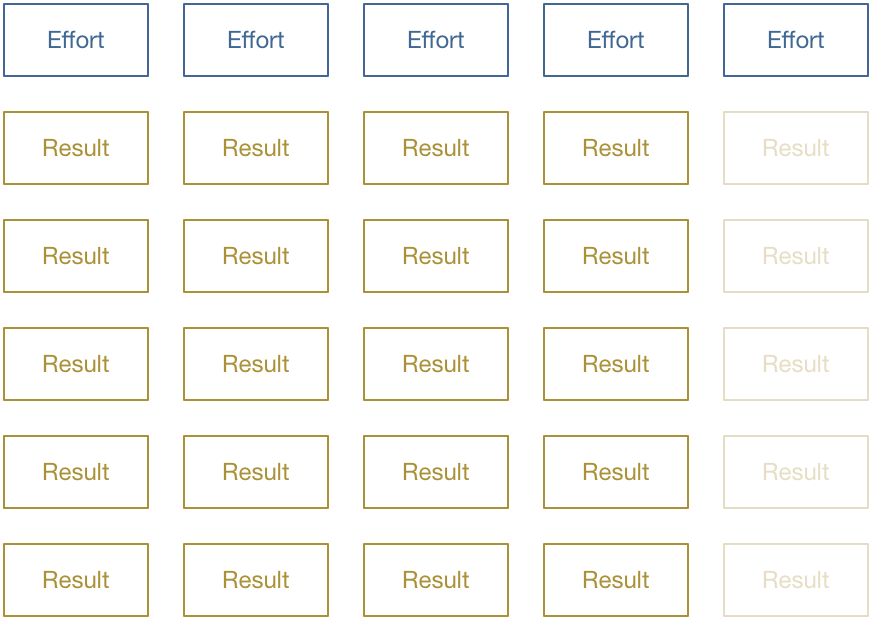In order to score a touchdown, the ball just needs to “break the plane” of the end zone. As soon as any part of the ball crosses into the space above the goal line, it counts. Danny Trevathan learned this the hard way. Joique Bell did it right.
This is an example of the Minimum Effective Dose, a pharmacological term Tim Ferris popularized in The Four-Hour Body (Amazon, iBooks). He gave the example of boiling water: water boils at 212ºF. Heating it to 213º doesn’t make it “more boiled”—it just wastes energy and resources that could be spent somewhere else.
I just came across another example of this in Ashlee Vance’s biography of Elon Musk (Amazon, iBooks).
In Musk’s words:
I just look at it as ‘What grades do I need to get where I want to go?’ There were compulsory subjects like Afrikaans, and I just didn’t see the point of learning that. It seemed ridiculous. I’d get a passing grade and that was fine. Things like physics and computers—I got the highest grade you can get in those. There needs to be a reason for a grade. I’d rather play video games, write software, and read books than try and get an A if there’s no point in getting an A. I can remember failing subjects in like fourth and fifth grade. Then, my mother’s boyfriend told me I’d be held back if I didn’t pass. I didn’t actually know you had to pass the subjects to move to the next grade. I got the best grades in class after that.”
Musk also admits readily that he attended as few classes as possible. He had learned to identify where the point of diminishing returns was. He knew when he needed to go to class, and when his time would be better spent elsewhere.
The Pareto Principle tells us that 80% of our results come from 20% of what we do. Think about what that means for your personal productivity, your team’s production, or your business’s quarterly results.

If we can identify that top 20% of our activities that gets us 80% of the way there, we have some interesting options.
One option is to blindly push through the other 80% of effort for the last 20% of results. We’ve been trained to accept this. We have salaried and hourly positions where we are getting paid for our time. That doesn’t scale well. We only have 168 hours a week that we can sell.
What if we could focus on results instead? Put in the 20% of effort, get the 80% of results, call it good enough and move on. Then do it again. And again. And again and again.

You’re still putting in 100% of effort. Now you’re getting 400% of results.
You’ll probably enjoy work more. You’ll probably enjoy the time you’re not working more, too.
Or you can keep doing business as usual, just like everyone else, and get the same results as everyone else.
Learn to identify which things are worth pushing through the 80% to polish the last 20%. Give yourself the time by saying no to the things that aren’t worth it.
Learn to identify the point of diminishing returns, and when it’s time to go do something else.
Learn to identify what it takes to be effective, and you’ll be more effective. Up to 4x more effective.
Question: What could you scale back on and still be just as effective? Share your thoughts in the comments, on Twitter, LinkedIn, or Facebook.

